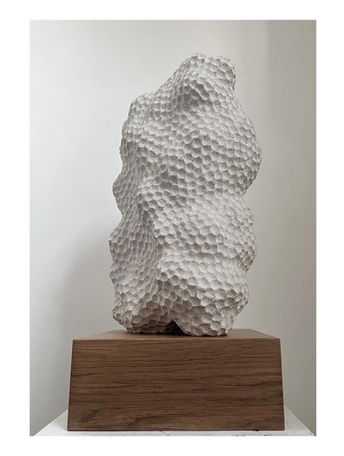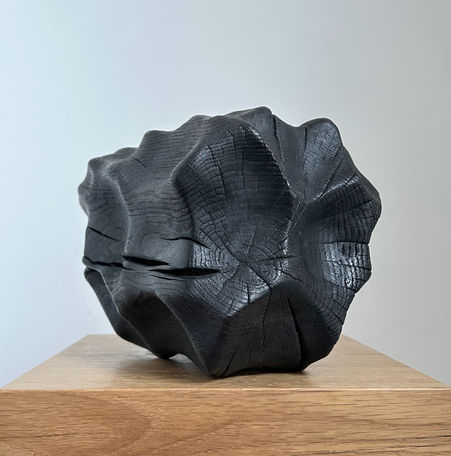Lawrence Dicks
Contemporary Sculptor
Scroll through a selection of available works. Contact us to find out more.
Lawrence Dicks’ sculpture is organic and rhythmic, drawing inspiration from natural phenomena and patterns.
He enjoys the physicality that working with sculpture demands and knew from early in his artistic practice that sculpture would be his medium of choice. Lawrence Dicks believes that sculptures, as with paintings, can communicate concepts in a way that words cannot.
These are not shapes that are easy to scan; Lawrence Dicks' intention is to make the viewer pause, take a closer look and engage on a deeper level. He is interested in the human condition, and what it means to be or to feel alive, and encourages the subjectivity in the responses different viewers will have to his sculpture.
In some works Lawrence Dicks investigates and represents cellular structure, slowly exagerating by deconstructing the repeating patterns into strange, tactile yet somehow simple objects. This has been an ongoing theme in his work since the beginning.
There is fluid repetition in Lawrence Dicks’ sculptures setting off a rhythm which flows between all works and connects them as a whole.
He says “My work is informed by observations of day to day life, the people I meet and things I sees on my daily walks”.
The rhythm of the tide is there together with the eroded effect that sea and time have on rocks - rounding, hollowing and pitting surfaces. This is not surprising, as a daily walk to a nearby beach must subconsciously filter through, although his work is not necessarily about that.
There is rhythm and repetition too in the process of making: When a weighty hammer repeatedly hits a chisel, making the same surface marks again and again, very slowly a form a form is revealed with surfaces of concave or convex undulations and textures. This is the recognisable visual language that Lawrence has established, his artful hand writing.
The stone Lawrence most commonly works with is Portland stone quarried on the South coast or alternatively Northern French limestone. In the past he has worked with clay to create macquettes or studies for larger works. He says “Every piece always leads on to the next” there is a narrative that flows through his work.
Lawrence Dicks graduated in 1998 from Plymouth University (Exeter School of Art and Design), and has exhibited throughout the UK. His work is in both private and public collections. He has been a professional artist for 25 years, and moved to Sussex soon after graduating.
The sculpture, ‘Inward’, has been cast in bronze from an original stone sculpture, which is in a private collection at Marchmont House, Scotland, so too is an enlarged bronze cast from the same piece which stands in the grounds. The large ‘Inward’ is over 1.5 meters across and is placed next to a scorched wood piece by David Nash in the grounds of Marchmont House.












